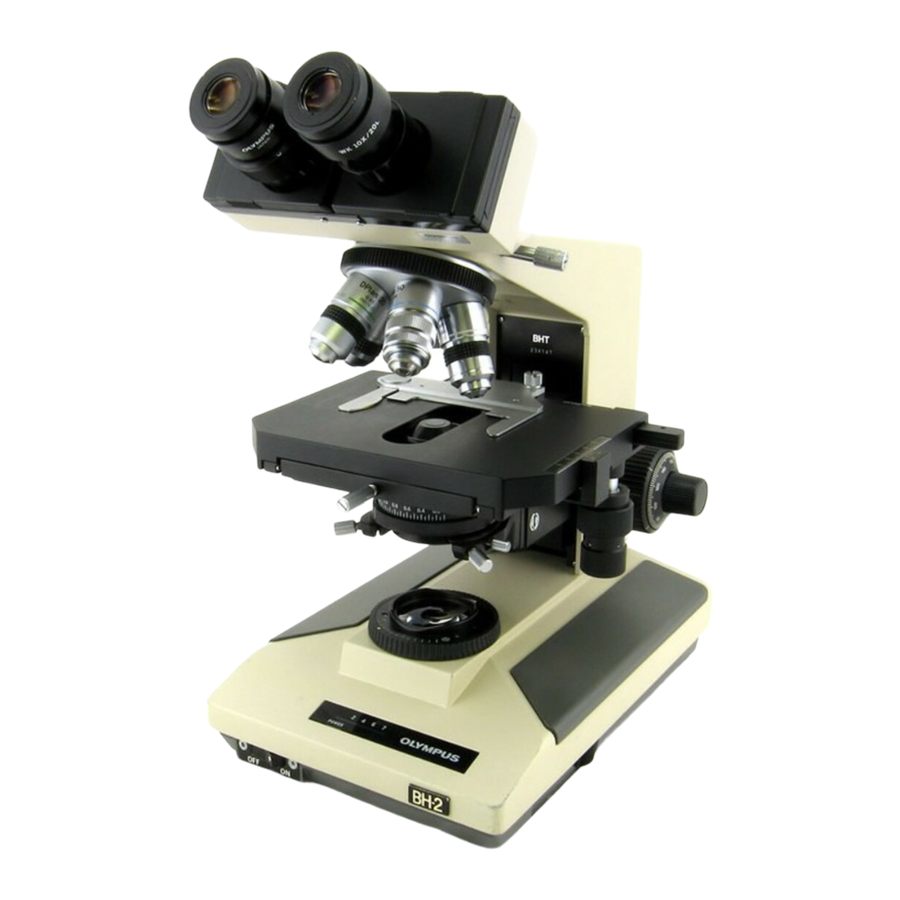Olympus BH2 Series Demontage, reiniging en hermontage - Pagina 29
Blader online of download pdf Demontage, reiniging en hermontage voor {categorie_naam} Olympus BH2 Series. Olympus BH2 Series 45 pagina's. Phase contrast
Ook voor Olympus BH2 Series: Handleiding voor probleemoplossing en afstelling (46 pagina's), Volledige demontage, reiniging en hermontage (23 pagina's), Volledige demontage, reiniging en hermontage (40 pagina's), Handmatig (6 pagina's), Installatiehandleiding (9 pagina's)

Servicing the Field Diaphragm Assembly (New Style)
This section applies only to the newer style assembly
(see
Figure
75). The older style assembly was covered
previously in this document.
Disassemble the Field Diaphragm Assembly (New Style)
Using a suitable JIS screwdriver, loosen and remove the
four m2.6x5 screws securing the brass retaining plate
onto the metal diaphragm stator. See
Figure 112 – Remove screws securing brass plate to stator
Rotate the brass retaining plate until the notch in the
plate aligns with the tab on the plastic diaphragm rotor.
See
Figure
113.
Figure 113 – Align plastic tab with notch in brass plate
Lift and remove the brass retaining plate from the metal
diaphragm stator. See
Figure 114.
Figure 114 – Lift and remove the brass retaining plate
Teardown, Cleaning, and Reassembly of the Miscellaneous Parts of the Olympus BH-2 Microscope Frames
Figure
112.
Carefully lift and remove the plastic diaphragm rotor
from the metal diaphragm stator. See
Figure 115 – Lift and remove the plastic rotor from stator
Beneath the diaphragm rotor, there are 10 diaphragm
leaves positioned within the circular recess of the metal
diaphragm stator (see
leaves of the iris diaphragm per
accompanying text.
Clean Components of Field Diaphragm Assembly (New Style)
Using a suitable solvent, thoroughly clean any
contamination from the diaphragm leaves (see
88). Acetone may be used if the leaves are metal. Do
not use acetone if the leaves are plastic, as this will
dissolve the plastic. Use a plastic-safe solvent, such as
alcohol, if this is the case. Using a suitable solvent such
as acetone, clean any contamination from the metal
diaphragm stator (see
solvent such as alcohol, clean any contamination from
the plastic diaphragm rotor. Do not use acetone here,
as this will dissolve the plastic. See
Figure 116 – Thoroughly clean the plastic rotor
Reassemble the Field Diaphragm Assembly (New Style)
Carefully reassemble the diaphragm leaves into the
circular recess of the metal diaphragm stator per
90
through
Figure 100
and the accompanying text.
Figure
115.
Figure
85).
Disassemble the
Figure 86
Figure
87).
Using a suitable
Figure
116.
Revision 1
Page 29 of 45
and
Figure
Figure
